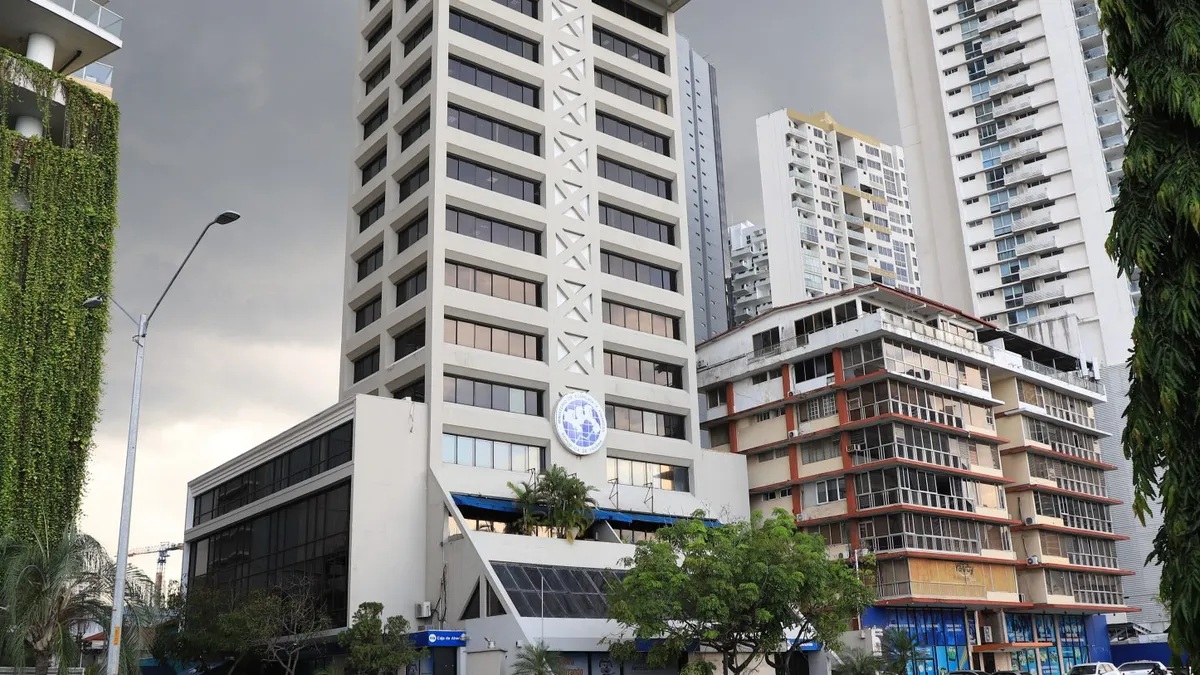Planning a Getaway on a Budget: Travel Tips for Saving Without Sacrificing

Weekend getaways can drain your wallet faster than week-long vacations, unless you know exactly where to save and where to spend. The difference between coming home relaxed or stressed starts with how you handle your costs.
You can still enjoy great experiences without overspending. The key is to plan each step with purpose. That planning begins with setting aside the money for your trip before you even look at flights or hotels.
Here are 10 clever ways to save money on your getaway without losing the quality of your experience.
1. Build and Secure Your Travel Fund
Skipping the funding step leads to credit card debt and missed opportunities. You need a dedicated pool of money just for travel. This starts with setting a hard budget ceiling, one you won’t break, no matter how tempting an upgrade looks later.
Assign realistic amounts for transportation, lodging, meals, activities, and an emergency buffer, say, $500 for transportation, $800 for lodging, $300 for meals, $200 for activities, and $200 for emergencies. Keep this total, around $2,000, in a separate account or digital wallet to keep it protected from everyday spending.
Automating those transfers keeps the plan on track. Even in the planning stage, you’re less likely to splurge because you can see, in real time, what’s allocated and what’s not.
Still, travel plans can hit emergencies, like unexpected car repairs, medical bills, or last-minute expenses that can eat into your savings. In situations like that, it helps to know where to turn for reliable, short-term funding advice. You can explore guides and tips on how to get a fast loan, say, if you need 100 dollars now or even a bit more, so you can bridge the gap without derailing your trip.
When your travel fund is ring-fenced like this, you operate from a position of clarity, not wishful thinking. That discipline pays off once you start booking because you already know your limits.
2. Lock in Transportation at Optimal Timing
Transportation is usually the biggest line item, so strategic timing is key. Airfares and train tickets fluctuate constantly, but there are predictable patterns you can use.
According to Michelle Gross, Forbes Contributor, flights booked a month before departure often hit the sweet spot for domestic trips, while long-haul fares can require booking six months ahead. Book too early and you risk paying a premium before competitive pricing kicks in.
Flexibility with departure days works in your favor. Midweek flights often cost less because they dodge peak business and weekend travel demand. If you can shift your itinerary even by a day, you could shave hundreds off the total.
Checking alternate airports within a reasonable radius can boost your chances of scoring a cheaper fare. This strategy is especially effective for international travel, where secondary hubs often offer more competitive pricing.
When it comes to ground transportation, booking bus or train tickets in advance can lead to significant savings compared to buying on the spot. Dynamic pricing tends to increase as departure dates near, so securing your tickets early helps avoid those last-minute price spikes.
3. Optimize Accommodation Beyond the Obvious
Hotels and rentals are where most travelers overspend. To avoid this, think in terms of “cost per night per person” rather than just the headline nightly rate.
This lets you accurately compare options that seem different on the surface. A $150 hotel room split between three people is often cheaper than a $90 single-bed rental when you factor in hidden cleaning or service fees.
Location is another lever. Properties just outside a major city center often offer rates 30–50% lower, yet they’re still within a short ride of key attractions.
Just confirm that the transit options are reliable, frequent, and reasonably priced. Otherwise, the savings evaporate. Choosing a property that includes breakfast can also reduce daily meal expenses, especially in cities where food prices are steep.
4. Streamline Itineraries for Efficiency and Cost Control
Overloading your itinerary leads to wasted time and unnecessary expenses. You need a route that minimizes backtracking and clusters attractions logically. Group sites in the same neighborhood so you’re not bouncing across the city and paying for extra rides or transfers. This is especially critical in destinations where transportation costs spike during rush hours.
For multi-city trips, plan your route to minimize travel distances between stops. Opting for an open-jaw ticket, flying into one city and departing from another, often costs less than returning to your original arrival point. This approach not only cuts airfare but can also save you the expense of an extra night’s lodging in the city you’d otherwise revisit.
Build downtime into your plan to avoid impulse spending. If you fill every gap with a café stop or souvenir shop, small purchases can add up quickly. Having a clear, efficient route keeps costs predictable while still letting you explore thoroughly.
5. Control Food Costs Without Cutting Quality
Eating well on a budget is all about timing and location. Midday meals tend to be cheaper than dinners, even at the same restaurants, because many offer lunch specials to draw in crowds. Structuring your main meal around lunch lets you enjoy higher-quality dining without evening markups.
Markets and local grocery stores are your allies. Picking up fresh items for breakfast or snacks keeps you from dropping money on overpriced convenience food.
Even in cities with a strong street food culture, you’ll notice that prices spike in high-footfall tourist areas. Walking a few blocks away from major attractions usually gets you better food for less.
If your lodging offers kitchen access, cooking a few meals can make a serious dent in the budget. This way, you can save on food costs and eliminate service charges and tips.
Keeping track of your daily food expenses helps you identify spending patterns early, allowing you to make adjustments before small overages add up. In destinations where produce is seasonal, buying what’s in abundance can cut costs dramatically while still giving you fresh, high-quality ingredients.
6. Target Off-Peak Seasons Strategically
Traveling off-season doesn’t just mean “when it’s cold or rainy.” Every destination has shoulder periods (times between peak and low seasons) when prices dip but weather and conditions are still favorable. Identifying these windows requires checking historical data for both climate and event calendars.
For example, heading to a coastal city two weeks before high season starts might mean open beaches, available tables at restaurants, and hotel rates that are still in the low bracket. Local tourism sites often publish occupancy trends that hint at when demand is lighter.
Moreover, airlines and hotels sometimes release flash sales in these windows to fill remaining capacity, and you can stack those discounts with early booking for even better rates. Shifting your trip dates by just a few days in either direction can push you into this lower-demand period and unlock significant savings.
Off-peak travel also has indirect savings. With fewer crowds, you spend less time waiting in lines and more time doing things. That efficiency can reduce the number of days you need, thereby trimming both lodging and meal costs.
7. Prioritize Free and Low-Cost Attractions First
Allocating your activity budget requires prioritization. Start with the free or very low-cost experiences that the destination is known for.
Museums frequently offer free-entry days, parks and natural landmarks typically have no admission fees, and many festivals are open to the public at no cost. Stacking your trip with these activities means your paid attractions can be fewer but more memorable.
When you do choose paid experiences, look for combination tickets or passes that cover multiple sites for one fee. The cost-per-attraction often drops dramatically compared to buying individual entries. Just make sure you’ll use enough of the pass to justify it, as unused entries wipe out the value.
You can also find walking tours run on a tip-only basis, which gives you control over what you spend while still accessing local expertise. Mixing these with free attractions keeps your cultural and entertainment lineup strong without gutting the budget.
8. Plan for Currency and Payment Efficiency
If your trip involves crossing borders, poor currency exchange decisions can eat into your budget faster than you think. Using airport exchange counters is almost always the worst option due to high margins. Instead, research the best withdrawal methods for your destination. Local ATMs tied to major banking networks often offer more favorable rates than physical exchange booths.
Avoid making frequent small withdrawals, as transaction fees can quickly add up. Withdrawing a moderate amount less often and keeping it securely on hand is usually more cost-effective than stopping at the ATM repeatedly.
If you’re using cards, check which networks are most widely accepted to avoid declined payments that force you into unfavorable cash exchanges.
Carrying a small reserve in the local currency before you arrive can cover immediate expenses like transport from the airport without relying on high-fee kiosks. A solid payment plan eliminates unnecessary leakage from your budget once you’re on the ground.
9. Leverage Local Transportation Passes and Multi-Use Cards
Getting around can quietly become one of your largest expenses if you rely solely on single-trip tickets or private rides. Many cities offer multi-day transit passes or stored-value cards that work across buses, trains, trams, and even ferries. The cost per ride drops significantly compared to paying per trip, especially if your itinerary involves multiple stops in a day.
Check the terms carefully. Some passes activate on first use and count consecutive calendar days, so timing their start matters. If your trip includes long walks between attractions on some days and heavier transit use on others, plan to activate the pass when your movement peaks. Doing so ensures you extract the maximum value without paying for inactive days.
In destinations with tourist-focused transport passes, weigh them against standard commuter options. Tourist passes sometimes include add-ons you won’t use, while local versions strip the extras and save you more.
10. Monitor and Adjust in Real Time While Traveling
Even with a solid plan, on-the-ground conditions can shift. Weather changes, route closures, or unexpected finds can affect both your schedule and your spending.
Tracking your expenses daily keeps you from drifting over budget without realizing it. Use a simple running total on your phone to always know where you stand against your original allocation.
If you’re trending over budget in one category, say, meals, you can proactively rebalance by choosing free attractions or self-prepared food for the next day. This quick course correction keeps the overall trip on track without cutting entire activities later.
You can also capitalize on real-time opportunities, like local promotions or discounted same-day tickets. With a clear picture of your budget status, you can confidently grab those deals, knowing precisely what you can afford without overshooting your limits.
Your Next Trip Starts Now
Saving money on travel is a skill that compounds with every trip you take. Once you’ve learned how to structure costs, spot hidden savings, and act at the right time, the process becomes second nature. Beyond this getaway, the real advantage is knowing you’ve built a repeatable formula you can rely on anytime. Every well-planned trip sharpens your strategy, and your next adventure will be even smoother.





